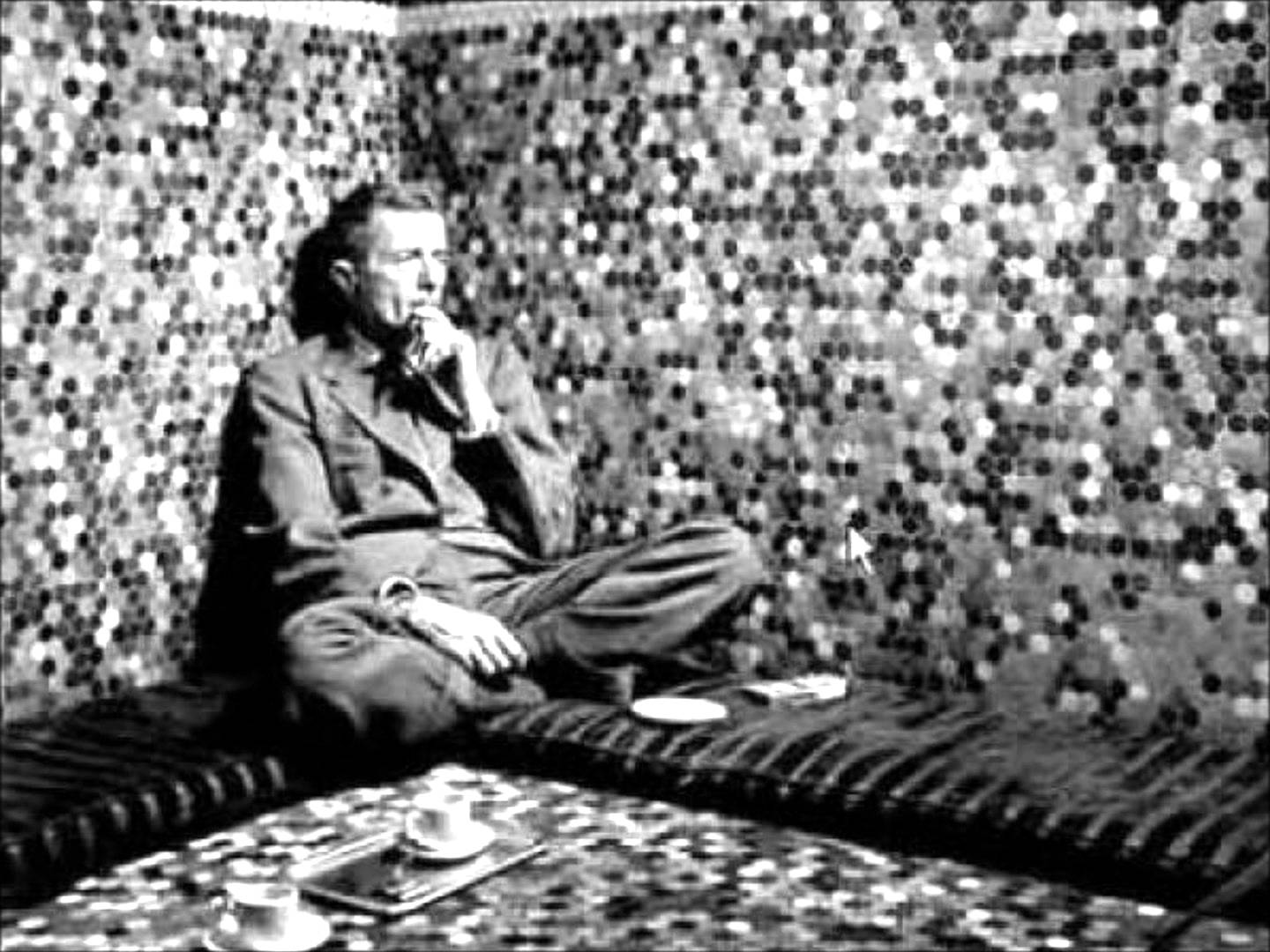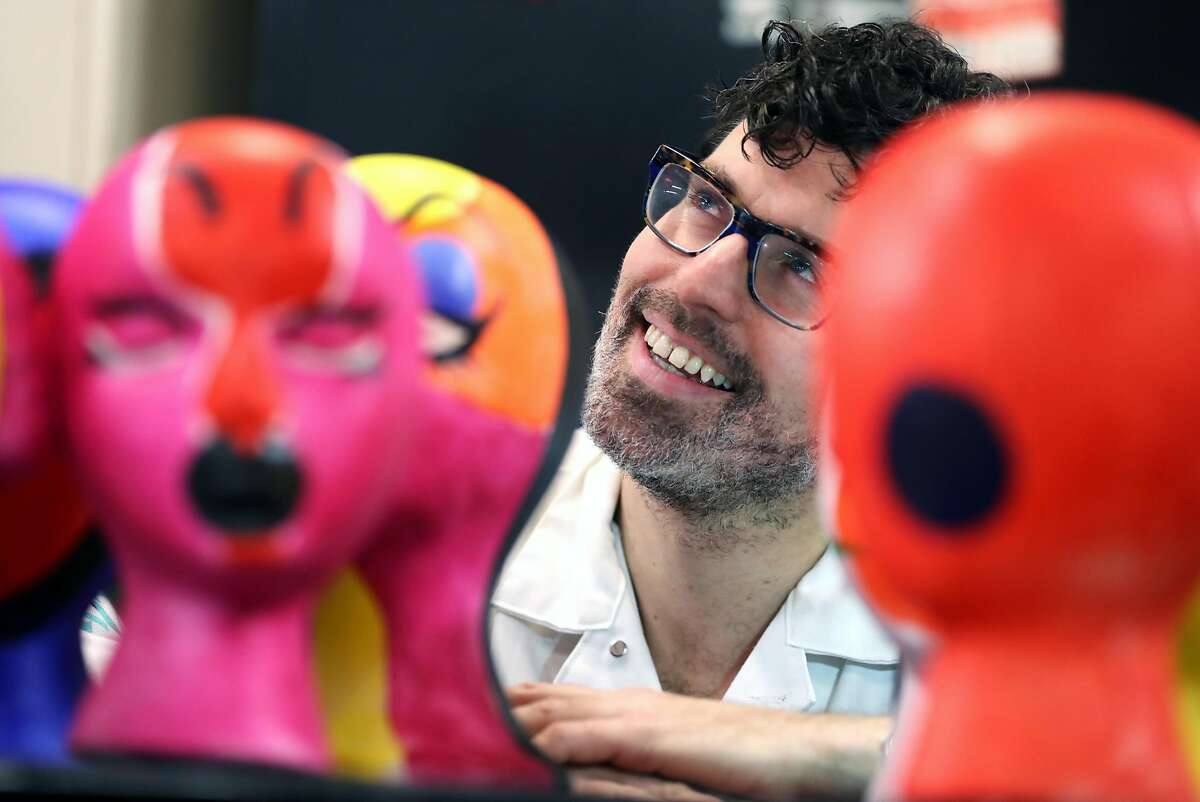December 30
PAUL BOWLES, American composer and author, born (d. 1999); Gay American expatriate composer, writer, and translator Paul Bowles liked to examine sexuality from a dispassionate perspective for its psychological suggestiveness. Such is the case in his most explicitly homosexual story, "Pages from Cold Point" (1947), in which a boy tries to seduce his father. Bowles's literary reputation rests on his novels, but until he was thirty-five he showed more interest in musical composition and poetry. Aaron Copland was a mentor, and in France, he intrigued Gertrude Stein, though she thought he was no poet. But Bowles was gifted in a number of fields, and increasingly he spread his skills over several: music for plays and films, short stories, autobiography, travel writing, and translations.
Pages from Cold Point marked a turning point in Bowles's life. In 1938, he had married Jane Auer, and in 1947, they went to live in Tangier. Jane Bowles had published Two Serious Ladies, and explored Gay relationships in both her life and in her fiction. Paul Bowles explored the psychological dimensions of relationships less directly, and many readers prefer to interpret his ground-breaking novel The Sheltering Sky (1949) in existentialist terms, even though it deals centrally with the extraordinary dynamic of his relationship with Jane -- a dynamic to which the homosexuality of both is relevant.
With the arrival of the Bowleses, the Tangier cult developed rapidly. American writers and artists of the Beat Generation -- William Burroughs, Allen Ginsberg, Gregory Corso, Tennessee Williams, Truman Capote, and others -- visited and socialized; the ambience of Tangier, as well as its toleration of experiments in drug use and sexual expression proved liberating and stimulating. Jane Bowles, always on the edge of sexual scandal, died in 1973. Paul Bowles, though he continued to attract interesting figures and, in his discreet way, a cult following, was very stable, and continued to produce a stream of projects, both written and musical.
Bowles and Daniel Halpern started the Tangier literary magazine Antaeus which was to feature many new authors, such as Lee Prosser, as well as more established authors such as Lawrence Ferlinghetti and his own work, such as "Afternoon with Antaeus", some fragments of an unfinished novel by his wife Jane along with excerpts from "The Summer House", and works by Daniel Halpern and others. Antaeus was published until 1994.
Bowles made a cameo appearance at the beginning and end of Bernardo Bertolucci's film version of The Sheltering Sky in 1990. Bowles' music was mostly forgotten until the 1990s, when a new generation of American musicians and singers became interested in this work again. These charming, witty pieces are a treasure to be savored by art song enthusiasts.
In 1995, Paul Bowles made a rare and final return to New York for a special Paul Bowles Festival celebrating his music at Lincoln Center under the conductorship of Jonathan Sheffer with the Eos Orchestra and later a symposium and interview held at the New School for Social Research.
Bowles was interviewed by Paul Theroux in 1994, documented in the last chapter of Theroux's travel book, The Pillars of Hercules.
In 1998, Bowles' wit and intellect remained as sharp as ever. He continued to welcome whoever turned up at his door into his apartment near the old American consulate in Tangier. However, on the advice of his doctors and friends, he began to limit interviews.
One of his final reminiscences about his literary life occurred during an interview with Stephen Morison, Jr., a frequent visitor and friend who was teaching at the American School of Tangier at the time. The interview was conducted on July 8, 1998 and appeared in the July/August 1999 issue of Poets & Writers Magazine. His final formal interview took place on June 6, 1999; it was conducted by Irene Herrmann, the executrix of the Paul Bowles Music Estate, focused on his musical career, and was published in September 2003.
Bowles died of heart failure at the Italian Hospital in Tangier on November 18, 1999 at the age of 88. He had been ill for some time with respiratory problems. His ashes were buried in Lakemont, New York, next to the graves of his parents and grandparents.
MACHINE DAZZLE (born Matthew Flower on this date) is an American costume designer, set designer, performance artist and drag queen known for his excessive and fantastical camp, surrealist, queer and maximalist approach.
Machine is known for utilizing found objects into his costume work. Sourcing items like ping pong balls, slinkies, soup cans, rubber hotdogs and more, to deepen the work's narrative intent.
The middle child of three sons, Matthew was mostly raised by his mother Deborah, while his father James was away working as an engineer on oil tankers. The family moved to Houston, Texas and then eventually to Idaho Falls, where Matthew felt alienated amongst the predominantly Mormon community. “I was always the tallest and the gayest” Machine Dazzle told Hilton Als when speaking about this period of his life for a piece in The New Yorker.
Machine cites seeing the 1980 Olivia Newton-John film Xanadu at the age of 8 as a defining moment that helped shape his view of himself. At the age of 19, he came out as gay to his conservative parents.
Machine Dazzle attended and graduated from the University of Colorado, Boulder, earning a degree in art. In 1994 he moved to New York City and joined the Dazzle Dancers. Machine Dazzle spent this time working a myriad of day jobs, including a position as a jewelry designer and at the non-profit cultural center Exit Art, to support his growing fascination with designing extravagant costumes to wear at night in New York City's clubs such as CBGB and Jackie 60.
The origin of the name Machine Dazzle came from dancing in costume at one such club as a Dazzle Dancer. A friend referred to him as a dancing machine, which quickly morphed into Machine Dazzle. As Machine's costumes began to catch the attention of other club kids and eventually he began taking commissions from drag queens and dancers. Julie Atlas Muz asked Machine to design a full show in 2004. In 2008, Machine Dazzle designed the sets and costumes for Lustre, a Midwinter Trans-Fest, starring Justin Vivian Bond. In 2009, he designed Taylor Mac's five hour long The Lily’s Revenge. Mac and Machine Dazzle would go on to collaborate extensively throughout their careers, including an epic project, “A 24-Decade History of Popular Music,” that covers 240 years’ worth of American history.
Machine was a co-recipient the 2017 Bessie Award for Outstanding Visual Design[5] and the winner of a 2017 Henry Hewes Design Award.[6]
In 2016, Taylor Mac's A 24-Decade History of Popular Music, which Machine Dazzle heavily collaborated on, was a finalist for the Pulitzer Prize in Drama.
In 2022, the Museum of Art and Design in New York opened first solo exhibition of Machine's work, ‘’Queer Maximalism x Machine Dazzle’’. The show occupied two full floors of the museum and positions full costumes, ephemera, material samples, photography, and video to fully contextualize the artists body of work.
Subscribe to Gay Wisdom
Would you like to have Today in Gay History (aka Gay Wisdom) sent to you daily?


